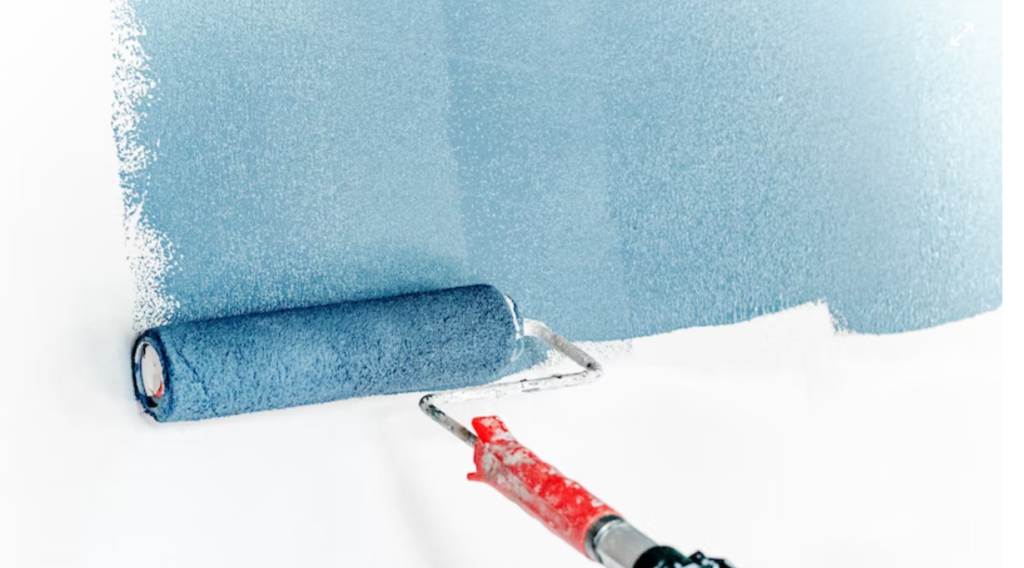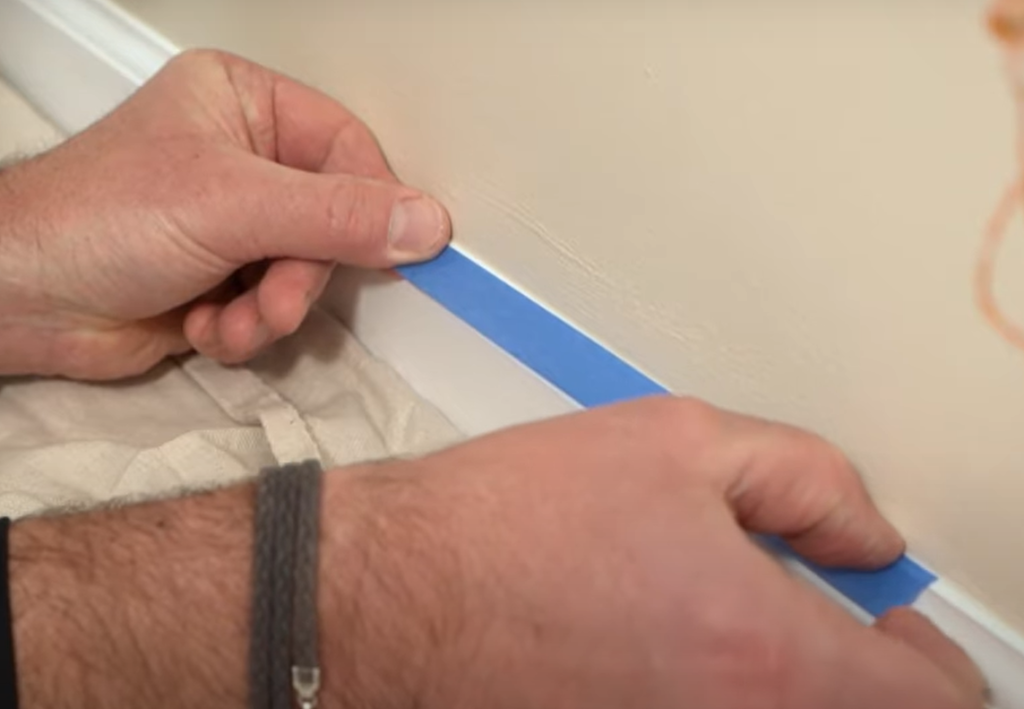Whether you’re a first-time painter or a seasoned pro, there’s always one question that seems to arise before starting any painting project: how long paint dry before taping?
Generally speaking, latex paints take about an hour to dry while oil-based paints can take up to 24 hours. If it’s particularly humid or cold outside, it could take even longer for your paint to fully cure.
Once the paint is dry to the touch, you can start taping off any areas that you don’t want to be painted. Just be sure to use painter’s tape that’s designed for use with latex or oil-based paints so it doesn’t peel away prematurely.
If you’re in a hurry, you can speed up the process by using a fan or by putting the painted surface in the sun. However, make sure the paint is completely dry before taping; otherwise, the adhesive on the tape will pull off the paint when you remove it.
How Long Does Paint Take to Dry before Taping?
Most people don’t give much thought to the science of paint drying. We just assume that it will take a few hours and that’s that. But there’s actually a lot of chemistry involved in the process.
Paint is made up of a mix of pigments, binders, and solvents. When you apply paint to a surface, the solvents evaporate, leaving behind the pigments and binders.
The evaporation process is accelerated by heat, so painting in warm weather will generally result in quicker drying times. The type of paint also makes a difference.
Latex paint, for example, dries more quickly than oil-based paints. If you’re planning on taping off a paint job, it’s important to know how long you need to wait for the paint to completely dry. Otherwise, you run the risk of peeling off dried paint along with the tape.
For latex paints, a minimum of 24 hours is generally recommended. With oil-based paints, you’ll need to wait at least 48 hours before taping.
So next time you’re planning a painting project, be sure to give yourself enough time to let the paint dry thoroughly before starting on the taping! The time can vary depending on the type of paint, the humidity levels, and the temperature.
How Many Coats of Paint Should Be Applied before Taping?
You’ve just painted your walls and you’re eager to add the finishing touches. But before you start taping up borders or painting trim, you need to make sure the paint is dry. Otherwise, you could end up with a big mess on your hands. So how long does paint take to dry before taping?
The short answer is that it depends on the type of paint you’re using. latex paint usually takes about an hour to dry, while oil-based paint can take up to 24 hours. However, both types of paint can be affected by humidity and temperature, so it’s always best to wait a little longer just to be safe.
If you’re in a hurry, there are a few things you can do to speed up the drying process.
- First, open all the windows and doors in the room to allow air to circulate.
- You can also turn on a fan or two to help circulate the air. Just be sure not to point the fans directly at the wet paint, as this could cause spots to develop.
- Finally, if available, use a hair dryer on a low setting to help speed up drying time.
With a little patience, your paint will be dry and ready for taping in no time! Before taping, it is recommended to apply two coats of paint. This will help ensure even coverage and prevent any colours from bleeding through the tape.
What Type of Tape is Best to Use When Painting?
When it comes to painting, preparation is key. Taking the time to properly protect surfaces that you don’t want paint on will save you time and effort in the long run. That’s where tape comes in. But with so many different types of tape on the market, it can be hard to know which one to use.
In general, painters’ tape is a good choice for most projects. It’s designed to stick well without leaving a residue, and it can be easily removed once the job is done. However, there are also speciality tapes available for more specific needs.
For instance, if you’re painting a textured surface, like stucco or brick, you may want to use a product like Frog Tape, which has a special adhesive that helps it grip rougher surfaces.
Choosing the right type of tape is important when painting. The wrong type of tape can cause problems like paint bleed, or peeling paint. Here are some tips on choosing the right type of tape for your next painting project:
1. Consider the surface you’ll be painting. Tape adheres best to smooth surfaces like walls and trim. If you’re painting a textured surface, like stucco or brick, use a low-tack painter’s tape so it doesn’t pull off any paint when you remove it.
2. Choose a tape width that’s appropriate for the area you’re working on. For example, use wider tape for baseboards and narrower tape for window casings.
3. Use the painter’s blue masking tape if you need to remove the tape soon after applying it (within 24 hours). This type of tape has low adhesion and won’t damage most surfaces when removed quickly.
4. Use green FrogTape if you need to leave the tape in place for longer periods of time (up to 21 days). This type of tape has medium adhesion and is safe for most surfaces when removed within the recommended timeframe.
Whatever type of tape you choose, make sure to test it out on a small area first to ensure that it won’t damage the surface or leave behind any unwanted residue.
How Long to Wait to Put Frog Tape on Fresh Paint?
If you’ve just painted a wall and want to add some Frog Tape, you may be wondering how long you should wait. The answer depends on the type of paint you used. If you used latex paint, you can usually apply Frog Tape right away.
However, if the paint is still wet, it’s best to wait a few minutes so that it doesn’t pull up the fresh paint when you remove the tape.
If you used oil-based paint, however, you’ll need to wait at least 24 hours before applying Frog Tape. This gives the paint time to fully cure so that it won’t be damaged when the tape is removed.
How Long to Wait for the Paint to Dry before Second Coat?
Most paint projects will require at least two coats of paint, so it’s important to know how long to wait for the first coat to dry before applying the second.
The general rule of thumb is to wait for four to eight hours, but this can vary depending on the type of paint and the conditions in your home.
For example, if you’re painting in a humid environment, it’s best to give the paint ample time to dry and cure before adding another layer.
In contrast, if you’re painting in a dry and breezy room, you may be able to get away with waiting for a shorter period of time. Ultimately, it’s best to consult the paint can label for specific recommendations.
If you’re using thicker paint, you may need to wait even longer before applying a second coat. Once the first coat is dry to the touch, you can go ahead and apply a second coat. Just be sure to check the instructions on your paint can for specific drying times.
Can I Put Painters Tape on Freshly Painted Walls
You can put painter’s tape on freshly painted walls, but there are a few things you should keep in mind.
- First, make sure the paint is completely dry before applying the tape. If it’s not dry, the tape may peel off the paint and damage the wall.
- Second, use low-adhesion tape so it doesn’t pull off any paint when you remove it.
- And finally, be careful not to press too hard when applying the tape, as this could also damage the wall.
Wrap Up
All in all, the best way to ensure your paint is dry before taping is to wait at least 24 hours. However, there are other methods you can try if you’re pressed for time.
Whichever method you choose, make sure to do a test patch first! And that’s it- now you know how long to wait before painting over the tape.
If it’s humid or cold in your home, it may take longer for the paint to dry. Once it’s dry, you can tape off the area with painter’s tape and start painting!


